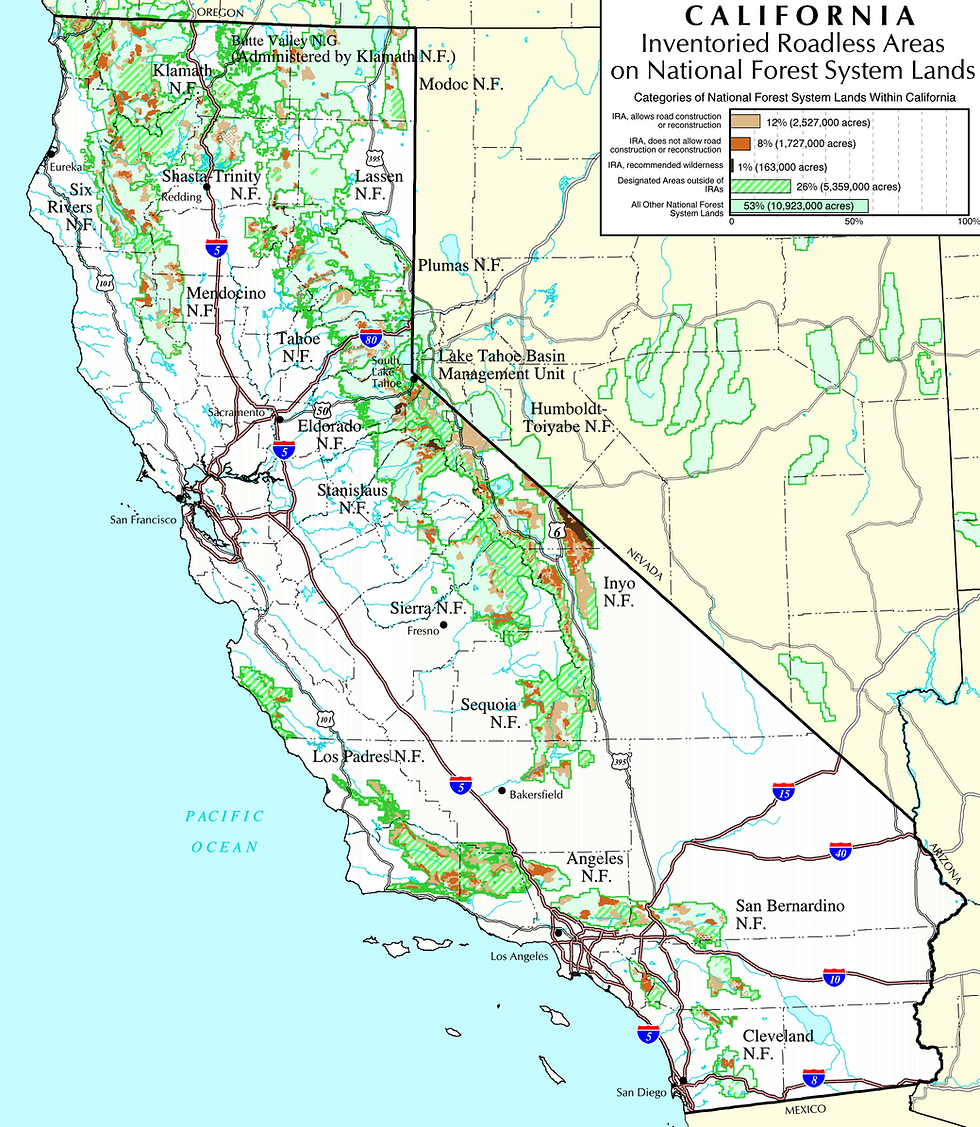Loophole-Ridden Proposal for Pacific Fishers Fails to Protect Forest Habitat
- Nov 6, 2019
- 3 min read
Updated: Aug 25, 2023

Photo: U.S. Fish and Wildlife Service.
In response to a petition and lawsuit from conservation groups, the U.S. Fish and Wildlife Service proposed today to protect Pacific fishers under the Endangered Species Act. Conservation groups are decrying loopholes in the proposal under a special “4(d)” rule that will allow ongoing logging of the forest-dependent carnivore’s habitat.
“Fishers deserve actual safeguards under the Endangered Species Act, not this weak proposal that doesn’t fully protect their habitat,” said Tierra Curry, a senior scientist at the Center for Biological Diversity. “The exemptions to their protection are fuzzier than fishers themselves.”
The Service proposed protection for the fisher in 2014 but then arbitrarily withdrew its proposal in 2016. Groups then filed suit, asserting that the denial ignored science in a politically motivated bow to the timber industry. In September 2018 a judge in the Northern District of California ruled that the Service had to reconsider the denial of Endangered Species Act protection for Pacific fishers. Today’s proposed listing is a revision of the 2014 rule with exemptions from protection for forest-management activities.
“Once more the Fish and Wildlife Service is failing to implement the protections that fishers need to recover. They are clearly relying on politics instead of science, so we will continue to push for full protection for fishers,” said Tom Wheeler, executive director at the Environmental Protection Information Center.
A relative of minks and otters, Pacific fishers once roamed forests from British Columbia to Southern California. But due to intense logging and historical trapping, only two naturally occurring populations remain: a population of 100 to 500 fishers in the southern Sierra Nevada and a population of between 250 and a few thousand in southern Oregon and Northern California. Fishers have been reintroduced in Washington state.
“This rare forest carnivore still isn’t getting the protection it needs to be safeguarded for future generations. We urge the agency to issue a final listing that does not buckle to pressure from industry and that protects the fisher fully from logging activities,” said Susan Britting, executive director of Sierra Forest Legacy.
Pacific fishers continue to be threatened by loss of habitat due to logging, use of toxic rodenticides by marijuana growers, and increasing fire severity exacerbated by climate change. In a 2015 study, scientists conducting necropsies on fishers found that 85 percent had been exposed to rodent poison.
“These days it’s rare to find a fisher in southern Oregon that hasn’t been exposed to poisonous rodenticides,” said George Sexton, conservation director at KS Wild. “If we can’t get a handle on the widespread poisonings the future of the species is pretty bleak. We are appreciative that the Fish and Wildlife Service now recognizes that fisher populations are threatened and need protections. Hopefully we can all work together to strengthen the safeguards that fishers need if they are to survive into the future.”
Efforts to gain federal protection for the fisher now span decades. The Center for Biological Diversity first petitioned to protect the animal in 1994, and again in 2000 with the Environmental Protection Information Center, Klamath-Siskiyou Wildlands Center and Sierra Forest Legacy. Earthjustice represented the groups in challenging the 2016 withdrawal of the proposed listing. The Service first put the fisher on a waiting list for Endangered Species Act protection in 2004.
“The Endangered Species Act is our nation’s bedrock environmental law, but sadly the U.S. Fish and Wildlife Service is sacrificing our most imperiled wildlife to appease industry interests with this loophole-ridden proposal,” said Elizabeth Forsyth, an Earthjustice attorney.





Comments